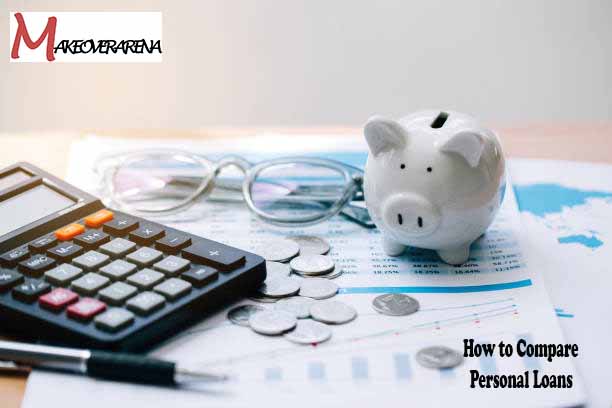When life throws unexpected financial challenges your way or when you have planned expenses that exceed your immediate budget, a personal loan can be a valuable tool to bridge the gap. Personal loans offer flexibility, quick access to funds, and the ability to meet various financial needs.

However, choosing the right personal loan that aligns with your financial goals and circumstances is crucial. In this comprehensive guide, we’ll walk you through the process of how to compare personal loans and make an informed decision.
How to Compare Personal Loans and Choose the Best Option for You
Comparing personal loans and choosing the best option for your needs involves several steps. Here’s a guide on How to Compare Personal Loans and Choose the Best Option for You:
Understand Your Financial Needs
Before you start comparing personal loans, it’s essential to have a clear understanding of your financial needs. Begin by assessing the purpose of the loan. Are you looking to consolidate high-interest debt, finance home improvements, or cover unexpected medical bills? Knowing your financial goal will help you determine the exact loan amount you need and the ideal loan term that suits your repayment capacity.
Explore Loan Types
Personal loans come in various forms, and each type has its advantages and disadvantages. Two primary distinctions are secured vs. unsecured and fixed-rate vs. variable-rate loans.
- Secured vs. Unsecured: Secured loans require collateral, such as your car or savings account, which can lower interest rates but carry the risk of losing your assets if you default. Unsecured loans, on the other hand, don’t require collateral but generally have higher interest rates.
- Fixed-rate vs. Variable-rate: Fixed-rate loans offer stable monthly payments, while variable-rate loans may start with lower rates but can fluctuate over time. Choose the type that aligns with your risk tolerance and budgeting preferences.
Consider how these loan types relate to your specific financial needs.
Research Lenders
Lenders come in various forms as well, including banks, credit unions, and online lenders. To compare personal loans effectively, you’ll want to consider factors such as interest rates, fees, and the lender’s reputation. Start by seeking out lenders known for their transparency and customer service. Read online reviews and check with the Better Business Bureau to gauge their credibility.
Compare Interest Rates and Fees
One of the most critical factors in comparing personal loans is the interest rate. To make accurate comparisons, focus on the Annual Percentage Rate (APR), which includes both the interest rate and any applicable fees. A lower APR generally indicates a more affordable loan.
Pay close attention to additional fees, including origination fees and prepayment penalties. These can significantly impact the total cost of your loan.
Review Loan Terms and Conditions
Never underestimate the importance of reading and understanding the loan agreement. Before signing, review key terms such as the repayment schedule, interest rate details, and any special clauses or conditions. If you have any questions or uncertainties, don’t hesitate to reach out to the lender for clarification.
Check Eligibility Requirements
Different lenders may have varying eligibility requirements. Most lenders consider your credit score, income, and employment history. Your credit score plays a crucial role in determining the interest rate you’ll qualify for. Be sure to understand the lender’s specific requirements and how they align with your financial situation.
Consider Additional Features
Some lenders offer optional features or add-ons, such as payment protection or unemployment insurance. While these can provide added security, they also come with additional costs. Consider whether these features are essential for your circumstances.
Get Multiple Quotes
To ensure you’re getting the best deal, request loan quotes from multiple lenders. This step allows you to compare offers side by side, taking into account interest rates, fees, and repayment terms. Getting quotes is a crucial part of the due diligence process.
Evaluate and Make an Informed Decision
Now that you’ve gathered all the necessary information, it’s time to evaluate your options and make an informed decision. Summarize the key points you’ve gathered, and consider your personal preferences and priorities. Choose the personal loan option that best suits your financial needs and aligns with your long-term goals.
Conclusion
Comparing personal loans is a meticulous process, but it’s a crucial step in ensuring that you secure the best financial solution for your needs. By understanding your financial goals, exploring loan types, researching lenders, and diligently reviewing terms and conditions, you can make a well-informed decision that puts you on the path to financial success. Remember, the right personal loan can help you achieve your goals and improve your financial well-being.
CHECK THESE OUT:



